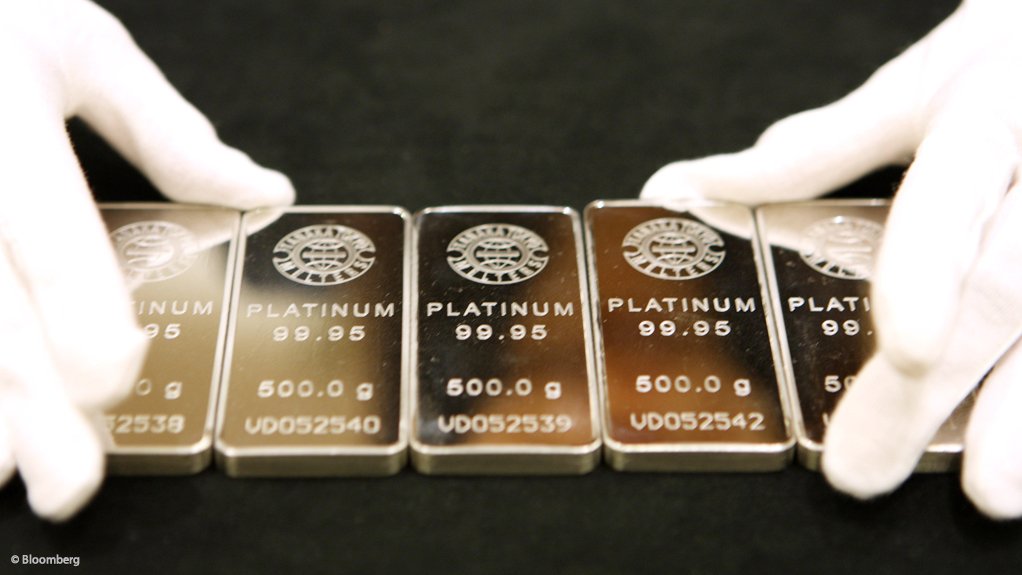LONDON – It’s more than a decade since miners and traders have met at London’s annual Platinum Week with prices as low as they are right now.
Soft prices, currency moves that have boosted mining costs and an uncertain demand outlook are weighing on the producers who’ll gather for cocktails under the medieval stone arches of the City of London’s Guildhall next week.
“It’s an incredibly tough market out there and likely to be tough for the rest of the year and maybe next,” Anglo American Platinum CEO Chris Griffith said in an interview. “Market sentiment is negative towards platinum at present and that begins to feed on itself irrespective of the long-term fundamentals of supply and demand.”
The commodity, mainly used to cut pollution from diesel cars, is down more than 20% from its highs of nine months ago to about $925/oz. Prices are even lower than during 2016’s event, when the industry was already heaving from a 10% slump from a year earlier. Griffith is still bullish on long-term prospects for platinum and its sister metals palladium and rhodium.
Diesel has fallen out of favour with consumers since some automakers admitted fiddling emissions tests to secure regulatory approval for their vehicles, in what became known as Dieselgate. The cars’ market share in Europe sank below half of new registrations for the first time in seven years during 2016, European Automobile Manufacturers’ Association data shows.
At the same time, a surge in the currencies of South Africa and Russia, the biggest producing nations, has pushed up the cost of digging up platinum relative to dollar income from sales of the metal for companies such as Griffith’s Amplats and Impala Platinum.
Hedge funds already smell blood. For the first time since records began in 2006, they’ve taken a net-short position on the metal. Bets on falling prices outnumbered wagers on gains by 4,945 futures and options contracts last week.
Some in the industry even say platinum prices may drift below those of palladium for the first time in 15 years. Palladium, a metal that can be used as a substitute for platinum in some industrial applications, now trades at about $800/oz.
“A crossover could be imminent,” said Anish Lal, a research analyst at brokerage ADS Securities London. “The way platinum is dumping, this could happen by the end of the year.”
Others such as Bernard Dahdah of Natixis SA and Joni Teves of UBS Group, two of the top forecasters in a survey by the London Bullion Market Association, say it will take longer for palladium to catch up, and in any event the situation will be short-lived as buyers would switch back to platinum.
Either way, it’s bad news for South African producers, which deliver about two ounces of platinum for every ounce of palladium dug, according to Rene Hochreiter, an analyst at Noah Capital Markets in Johannesburg. The country is the top producer of platinum, bringing up more than 70% of freshly mined metal, research firm Metals Focus says. On the flipside, supply looks set to tighten, say analysts and miners.
Griffith, who is scheduled to speak at a Bloomberg forum during the London Platinum and Palladium Market association’s annual gathering, says weak prices are discouraging investment in production. Vehicle and industrial markets still offer good prospects, with further potential in jewellery and investment markets, he said.
Still, a slow, steady drop in output may not keep producers in business, according to those who think a more radical shakeup lies ahead. The cost of producing/oz of platinum in South Africa in 2016 was $868, according to Metals Focus.
“The situation has got so bad, Superman couldn’t handle it,” Peter Major, director of mining at Cadiz Specialised Asset Management, said from Johannesburg. “We’re either going to see one big producer go out of business or a couple of producers are going to lose an arm and a leg.”
Edited by: Bloomberg
EMAIL THIS ARTICLE SAVE THIS ARTICLE
To subscribe email subscriptions@creamermedia.co.za or click here
To advertise email advertising@creamermedia.co.za or click here













